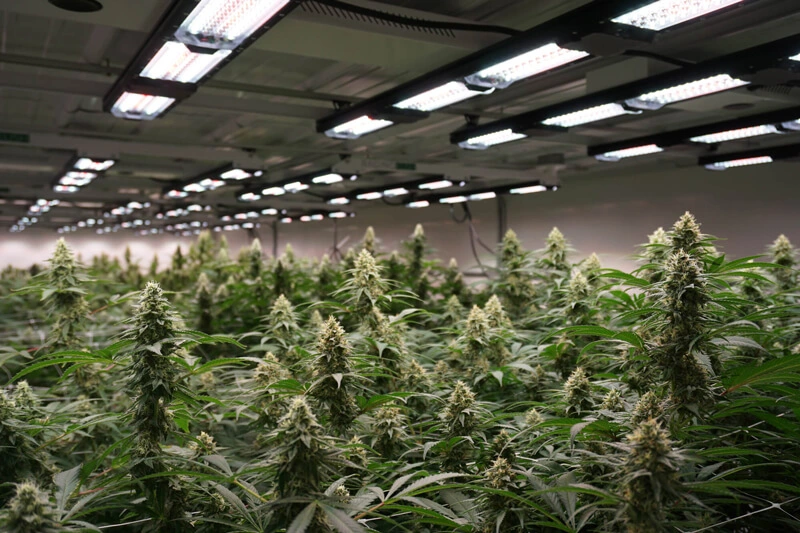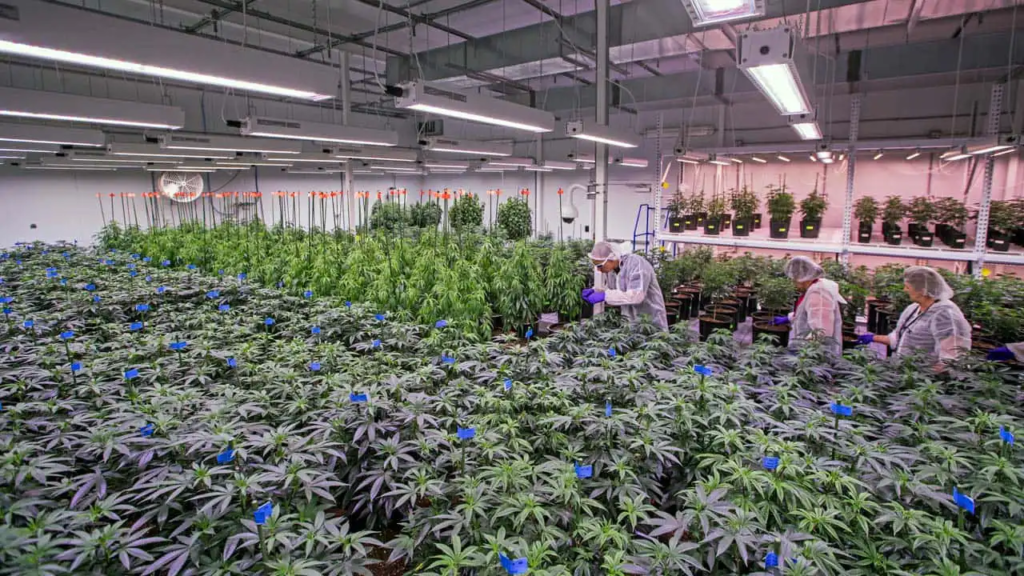Introduction
Are you interested in growing your own CBD plants indoors but don’t know where to start? You’re in the right place! In this comprehensive guide, we’ll walk you through the step-by-step process of successfully growing CBD seeds indoors. Whether you’re a beginner or an experienced gardener, you’ll find valuable insights to help you achieve a thriving indoor CBD cultivation.

Selecting the Right CBD Seeds
Before you begin, it’s crucial to choose the right CBD seeds. Look for reputable suppliers offering high-quality CBD seed varieties suitable for indoor cultivation. Consider factors like CBD-to-THC ratio, flavor profile, and desired effects when making your selection.
Setting Up the Growing Space
Creating the ideal growing environment is essential for indoor CBD cultivation. Here’s what you’ll need:
- Grow Tent: A dedicated grow tent provides a controlled environment with proper ventilation, lighting, and humidity.
- Grow Lights: High-quality LED or HID grow lights mimic natural sunlight and promote healthy plant growth.
- Ventilation System: Ensure proper airflow to prevent mold and mildew.
- Temperature and Humidity Control: Maintain optimal conditions for your specific CBD strain.
- Growing Medium: Choose between soil, hydroponics, or other growing mediums depending on your preference.
Germinating Your CBD Seeds
Start by germinating your CBD seeds following these steps:
- Place the seeds in a damp paper towel inside a sealed container.
- Keep the container in a dark, warm place (around 70-85°F or 21-29°C).
- Check regularly for germination, which usually takes 2-7 days.
Transplanting Seedlings

Once your CBD seedlings have sprouted, transplant them into your chosen growing medium or pots with nutrient-rich soil. Ensure proper spacing to allow for growth and prevent overcrowding.
Providing Adequate Lighting
Proper lighting is crucial for indoor CBD cultivation. Ensure your plants receive 18-24 hours of light during the vegetative stage and 12 hours of light during the flowering stage. Adjust the distance between the lights and plants to avoid light burn.
Nutrient Management
CBD plants require specific nutrients at different stages of growth. Use a balanced fertilizer and monitor the pH levels of your growing medium. Adjust nutrient levels accordingly to prevent nutrient deficiencies or excesses.
Watering and Humidity
Maintain consistent watering schedules and monitor humidity levels. Overwatering can lead to root rot, while low humidity can stress your plants. Invest in a hygrometer to keep humidity within the optimal range.
Pruning and Training
Pruning and training your CBD plants can improve air circulation and light penetration. Remove unwanted leaves and branches and use low-stress training (LST) techniques to promote even growth.
Flowering and Harvesting
Transition your plants into the flowering stage by adjusting the light cycle to 12 hours of light and 12 hours of darkness. Monitor trichome development and harvest your CBD buds when they reach the desired level of maturity.
Pest and Disease Management
Indoor CBD cultivation can be susceptible to pests and diseases, so it’s essential to remain vigilant. Regularly inspect your plants for signs of infestations or illness. Consider using organic pest control methods like neem oil, beneficial insects, or natural sprays to keep unwanted visitors at bay. Maintain a clean growing environment to reduce the risk of mold, mildew, and other common indoor plant diseases.
Monitoring pH Levels
Maintaining the proper pH levels in your growing medium is crucial for nutrient absorption. Test the pH regularly and make adjustments as needed to ensure that your CBD plants can access the essential nutrients they require for healthy growth. Most CBD strains thrive in a pH range between 6.0 and 7.0.
Environmental Control
Consistency in the indoor environment is key to successful CBD cultivation. Keep an eye on factors like temperature, humidity, and air circulation. Sudden changes or extremes can stress your plants, affecting their growth and CBD production. Using timers and monitoring devices can help you maintain a stable environment.
Training Techniques
In addition to pruning, consider training techniques like topping, FIMing, and super cropping to encourage lateral growth and increase yields. These methods can help shape your CBD plants to maximize light exposure and promote better bud development.
Flowering Stage
As your CBD plants enter the flowering stage, you’ll notice the development of buds. During this time, it’s crucial to maintain consistent lighting schedules with 12 hours of light and 12 hours of darkness. Be patient; the flowering stage can take several weeks to several months, depending on the strain.
Harvesting Your CBD Buds
Harvesting at the right time is critical to obtaining high-quality CBD buds. You’ll know it’s time to harvest when the trichomes on the buds turn cloudy or amber, depending on your desired CBD potency. Use a magnifying glass or a digital microscope to get a closer look at the trichomes.
When harvesting, use clean, sharp scissors to trim the buds carefully. Be gentle to avoid damaging the delicate trichomes, which contain the valuable CBD compounds. After harvesting, hang the trimmed buds upside down in a dark, cool, and well-ventilated space to dry. Proper drying and curing are essential for the final product’s flavor and potency.
Drying and Curing
Drying your CBD buds usually takes about a week, but it can vary depending on humidity levels and bud size. Once the buds are dry, transfer them into airtight containers, like glass jars. Burp the jars daily during the first week to release excess moisture and prevent mold growth. After the initial curing period, you can reduce burping to once a week.
Proper curing enhances the flavor and smoothness of your CBD buds. Aim to cure them for at least two to four weeks, although longer curing periods can further improve the quality of your harvest.
Conclusion
Growing CBD seeds indoors can be a rewarding experience when done correctly. By selecting the right seeds, providing the ideal growing environment, and following these steps, you can cultivate high-quality CBD plants in the comfort of your home. Remember that patience and attention to detail are key to a successful indoor CBD cultivation journey. Happy growing!
